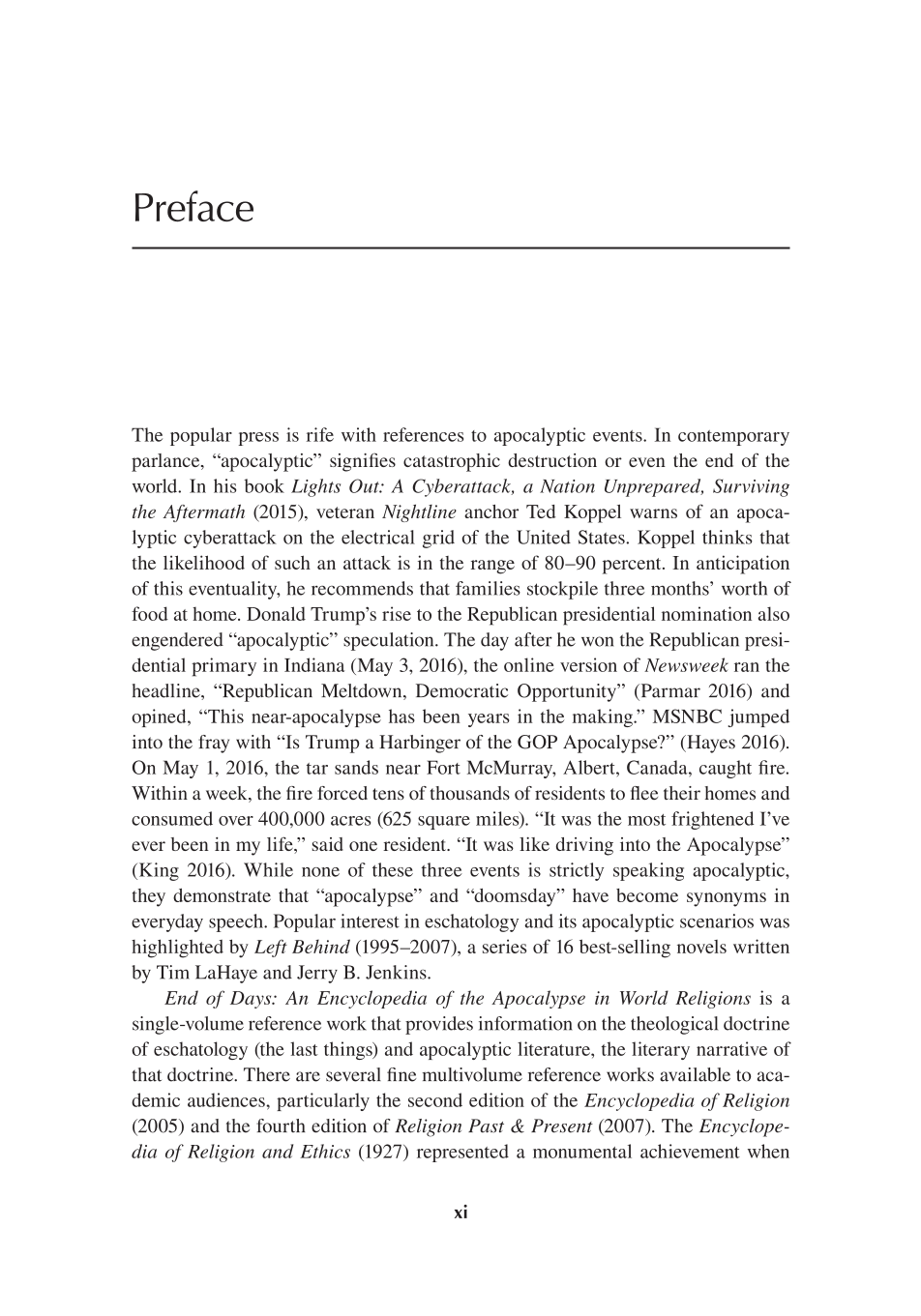xi
Preface
The popular press is rife with references to apocalyptic events. In contemporary
parlance, “apocalyptic” signifies catastrophic destruction or even the end of the
world. In his book Lights Out: A Cyberattack, a Nation Unprepared, Surviving
the Aftermath (2015), veteran Nightline anchor Ted Koppel warns of an apoca-
lyptic cyberattack on the electrical grid of the United States. Koppel thinks that
the likelihood of such an attack is in the range of 80–90 percent. In anticipation
of this eventuality, he recommends that families stockpile three months’ worth of
food at home. Donald Trump’s rise to the Republican presidential nomination also
engendered “apocalyptic” speculation. The day after he won the Republican presi-
dential primary in Indiana (May 3, 2016), the online version of Newsweek ran the
headline, “Republican Meltdown, Democratic Opportunity” (Parmar 2016) and
opined, “This near-apocalypse has been years in the making.” MSNBC jumped
into the fray with “Is Trump a Harbinger of the GOP Apocalypse?” (Hayes 2016).
On May 1, 2016, the tar sands near Fort McMurray, Albert, Canada, caught fire.
Within a week, the fire forced tens of thousands of residents to flee their homes and
consumed over 400,000 acres (625 square miles). “It was the most frightened I’ve
ever been in my life,” said one resident. “It was like driving into the Apocalypse”
(King 2016). While none of these three events is strictly speaking apocalyptic,
they demonstrate that “apocalypse” and “doomsday” have become synonyms in
everyday speech. Popular interest in eschatology and its apocalyptic scenarios was
highlighted by Left Behind (1995–2007), a series of 16 best-selling novels written
by Tim LaHaye and Jerry B. Jenkins.
End of Days: An Encyclopedia of the Apocalypse in World Religions is a
single-volume reference work that provides information on the theological doctrine
of eschatology (the last things) and apocalyptic literature, the literary narrative of
that doctrine. There are several fine multivolume reference works available to aca-
demic audiences, particularly the second edition of the Encyclopedia of Religion
(2005) and the fourth edition of Religion Past & Present (2007). The Encyclope-
dia of Religion and Ethics (1927) represented a monumental achievement when


























































































































































































































































































































































































































